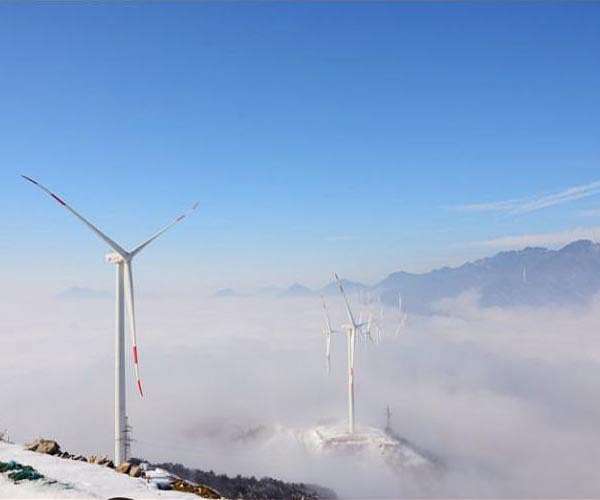A quarter of China’s energy now comes from non-carbon sources: white paper
A quarter of all the energy China now uses comes from non-carbon sources, according to research published Thursday, as Beijing rapidly moves its vast economy onto a greener footing.
The country is the world’s largest emitter of greenhouse gases, but in recent years has become a global leader in renewable energy.
The country has pledged to peak planet-warming carbon dioxide emissions by 2030 and cut them to zero by 2060.
According to state news agency Xinhua, the share of “clean energy” in total national consumption has risen from 15.5 percent to 26.4 percent over the past decade in a white paper published on Thursday. According to the newspaper, this also includes nuclear energy.
By the end of 2023, China’s cumulative installed capacity of wind and solar power had increased 11-fold over the past decade, it added.
According to the report, China was responsible for more than 40 percent of annual additions to global renewable energy capacity since 2013.
“China has made historic breakthroughs in the development of green and low-carbon energy,” the white paper said.
In the Paris climate agreement, countries pledged to cut greenhouse gas emissions to keep global temperature rise below 1.5 degrees Celsius above pre-industrial levels.
China has won plaudits for its efforts to quickly phase out polluting energy sources such as coal, but has also resisted calls to act even more ambitiously.
Last week, wind and solar energy capacity exceeded a target set by President Xi Jinping, almost six years ahead of schedule.
Misaligned development in the country’s renewable energy sector also means a significant amount of energy is wasted, while turbulence in the domestic solar sector has left some companies in serious financial difficulties.
– ‘Uncertain factors’ –
China has the capability and confidence that it can achieve its goal of peaking carbon emissions before 2030, said Song Wen, head of legal affairs and institutional reform at the National Energy Administration.
But domestic energy demand is growing and “unpredictable and uncertain factors are increasing,” Song said at a news briefing to mark the white paper’s release.
Although renewables make up an increasing share of China’s energy consumption, rising demand continues to increase coal use and emissions.
“We must note that China is still a developing country and we are promoting modernization for a huge population,” Song said.
“Huge efforts” are needed to achieve the goal of maximum carbon emissions and carbon neutrality, she added.
The White Paper also rejected “all forms of decoupling” and any “intersection of industrial and supply chains”.
The United States and the European Union have expressed concern that a surge in cheap Chinese exports, fueled by Chinese government support in key sectors such as solar energy and electric vehicles, could pose a risk to global markets.
China has pushed back against these concerns, calling them “unfounded.”
“As a strong supporter of true multilateralism, China opposes all forms of unilateralism and protectionism,” the white paper said.


